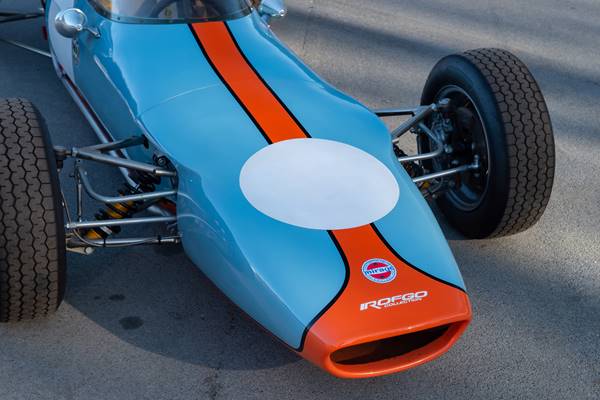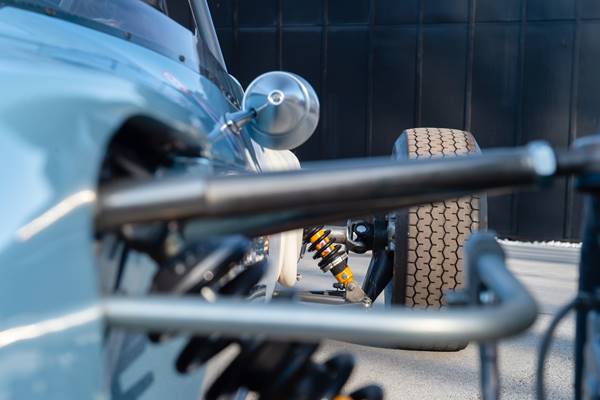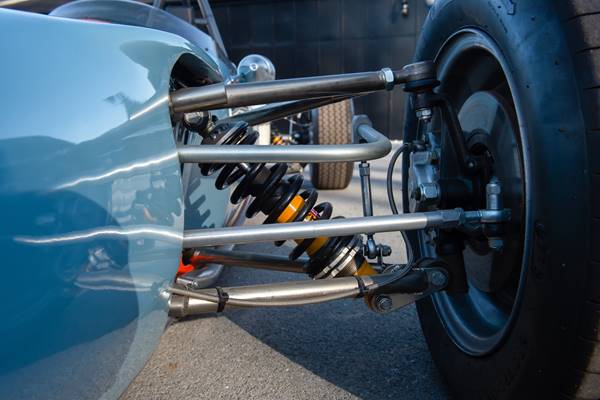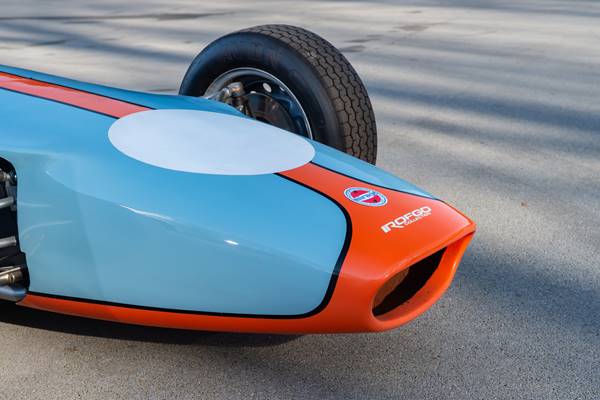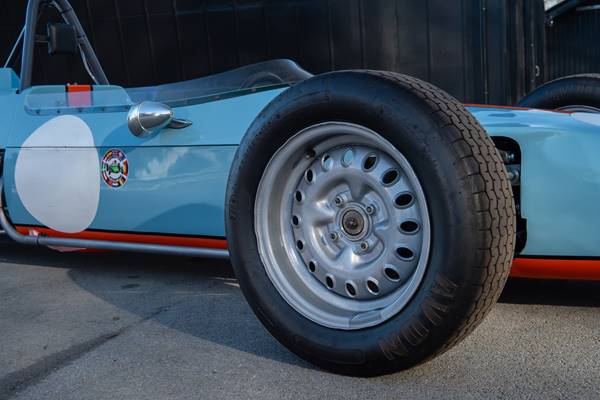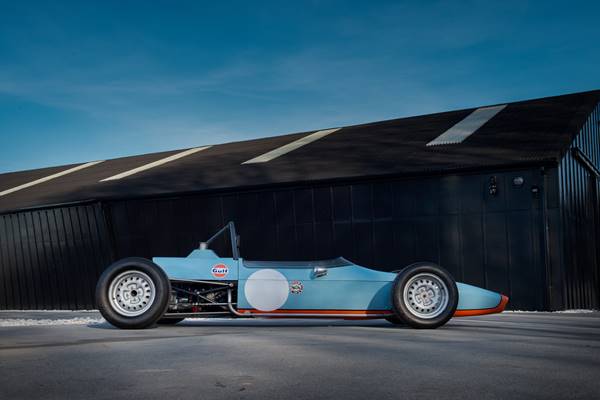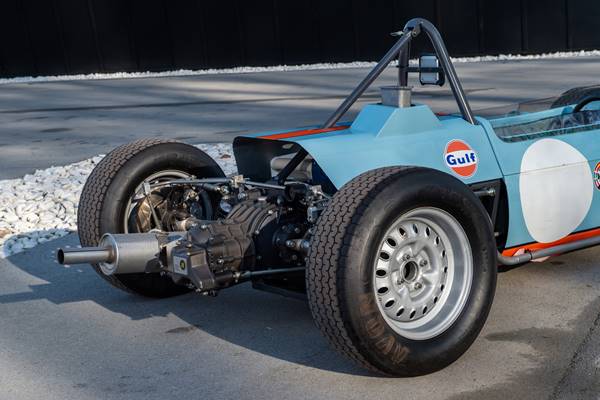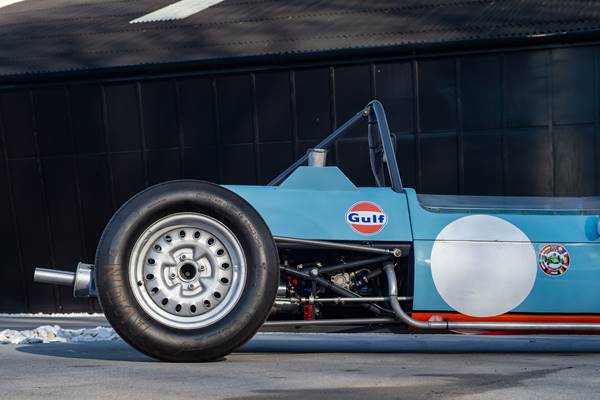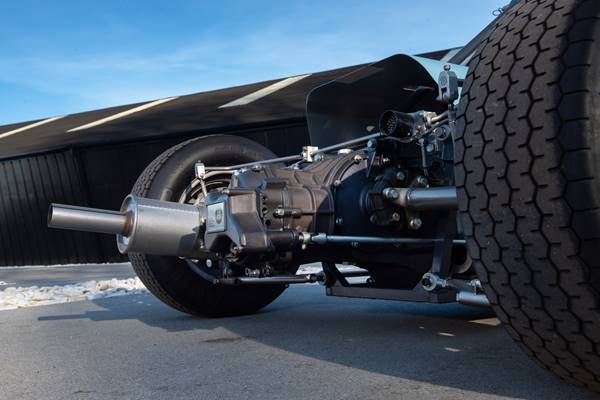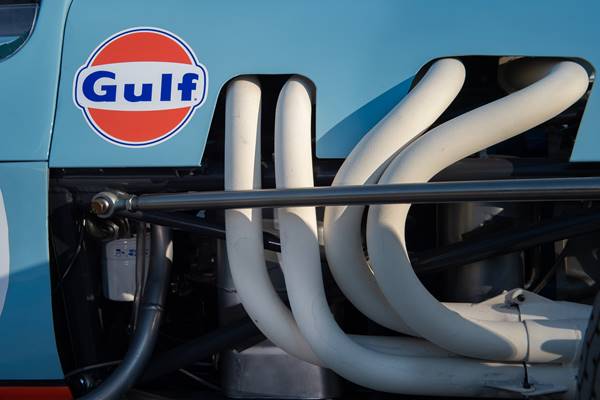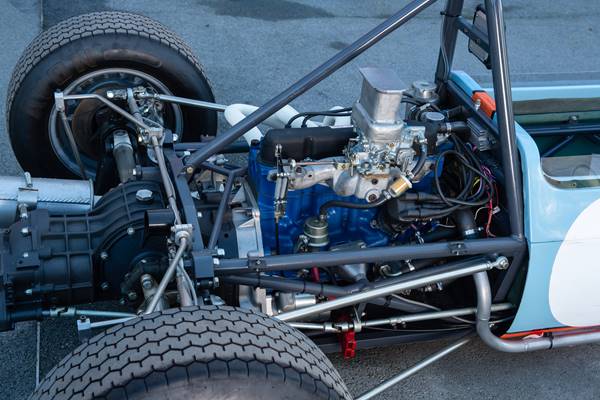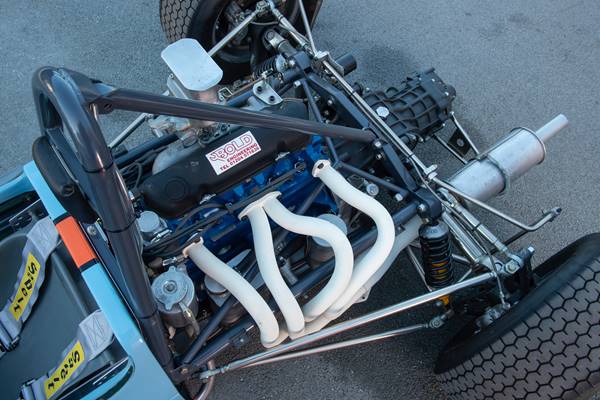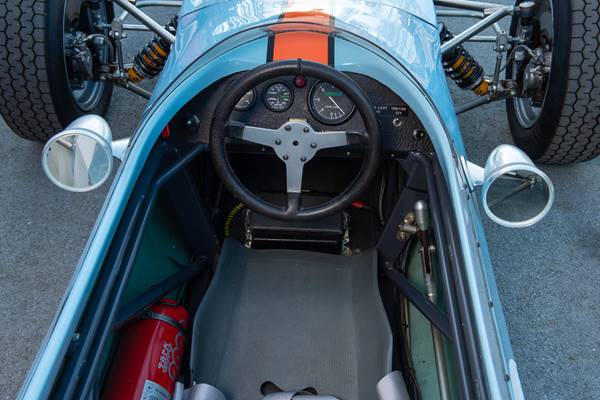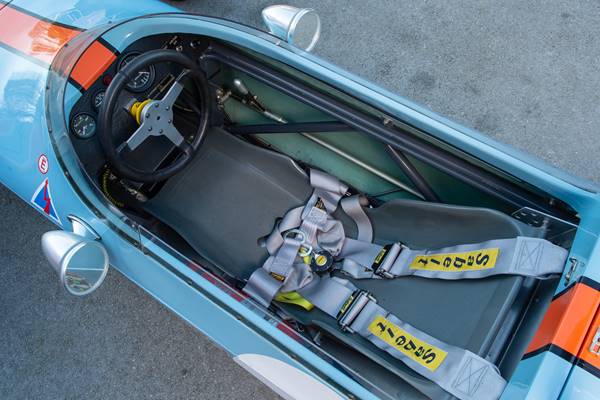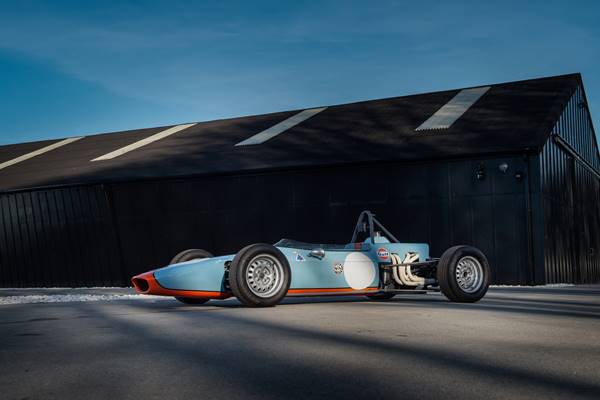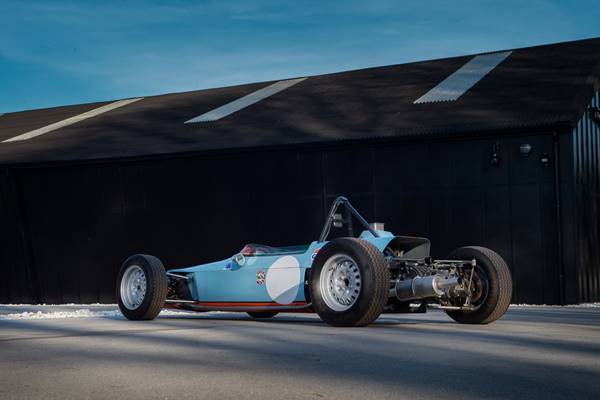The story of Gulf in motorsport in like no other, and dates from the 1930s. However, the period pertinent to the ROFGO Collection was born out of a 24-Hour Ford test at Sebring in January 1966, to which a number of potential customers were invited. Among them was the Executive Vice-President of Gulf Oil, Grady Davis, who was so taken by his Sebring experience that he not only ordered a GT40, but subsequently invited John Wyer of Ford Advanced Vehicles to submit a proposal for Gulf to sponsor his next racing programme. A deal was struck and, conscious that the GT40 was entering the Autumn of its career and wanting something that looked a little different, the new team dusted down a Len Bailey design that was effectively a GT40 design with narrower, lighter roof and smaller frontal area. Mirage was chosen from a range of possible names and the first public appearance for the Gulf M1s was at the Le Mans trail of April 1967.
Like the M1 the ensuing models of Mirage were long distance sports racing cars, with one exception - the M5. The reason for this is not self explanatory and is actually more to do with the UK taxation laws than motorsport! As explained in Mirage manager John Horsman’s excellent book, ‘Racing in the Rain’, back in the 1960s/1970s, there was a tax on Britain’s service industries from which the manufacturing sector was exempt; so therefore was JW Automotive Engineering all the time it was making GT40s for the Ford Motor Company. However, the moment that programme was complete and replaced with the responsibility for running the works Porsches, JWAE overnight switched from being a manufacturer to a service provider, and therefore faced being required to pay and unwelcome annual sum of money to the Inland Revenue. Unsurprisingly the idea lacked appeal, so a plan was hatched to build a batch of single seaters for Formula Ford - a high profile junior race category, for which cars were in high demand. And so the Mirage M5 was born.
Pat Rochford was commissioned to design the newcomer and oversee its production and some 15-20 examples are understood to have been built during 1970/1971. By Horsman’s own admission, while the M5 did indeed save the company quite a lot in taxation, it was a money loser overall, as JWAE’s heart and priority remained with managing the Porsche race team.
It can be seen that, as the 6th M5 built, chassis 506 is clearly a rare car and was being advertised in disassembled car form as recently as 2011. Now once more looking as it should, it has filled one of the few remaining gaps in the extraordinary ROFGO Collection of Gulf liveried racing cars.

